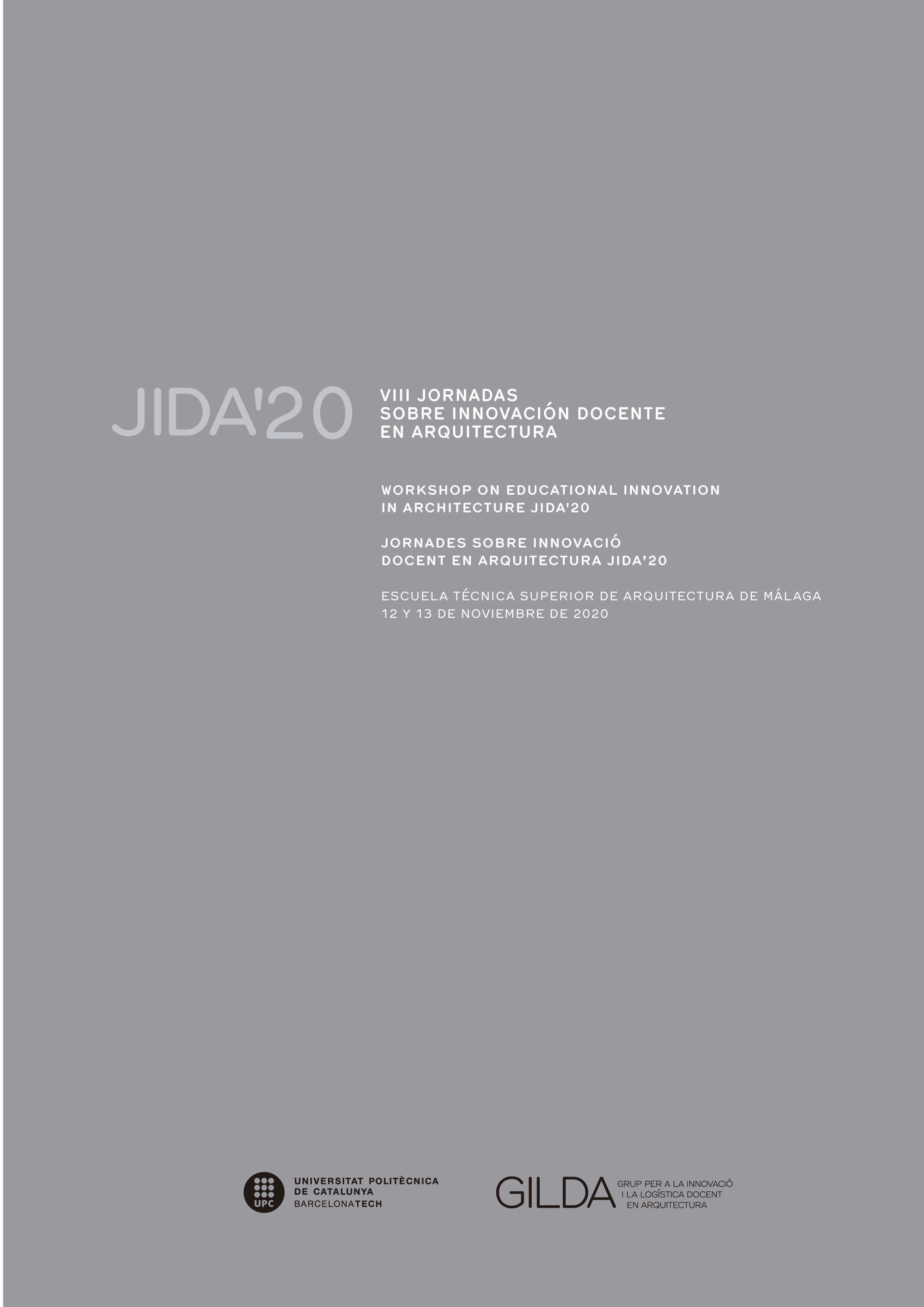Confined learning: Opportunities and perception of college students
DOI:
https://doi.org/10.5821/jida.2020.9380Abstract
This year, the implementation of ICT tools to supply face-to-face activity has been carried out abruptly, lacking an adaptive period that would allow the assimilation of the necessary tools, or an adaptation of the dynamics as planned as face-to-face teaching. It seeks to describe the perception of students of architectural projects on online teaching during the Covid-19 crisis and to know if virtual teaching can replace face-to-face teaching in this area. To obtain the results, it was applied a questionnaire available to all students and teachers of architectural projects at the school. The results obtained showed that the students felt more stressed than usual due to the current situation, emphasizing the impossibility of going outside, the extra workload and the monothematic of Covid-19.
References
ALLEN, M. JOHN BOURHIS, N.B. MABRY, E. (2002). Comparing Student Satisfaction with Distance Education to Traditional Classrooms in Higher Education: A Meta-Analysis. American Journal of Distance Education 16 (2): 83-97. doi:10.1207/S15389286AJDE1602_3. https://doi.org/10.1207/S15389286AJDE1602_3. (Consultado el 28 de mayo de 2020)
BERNAL GUERRERO, A. CÃRDENAS GUTIÉRREZ, A. R. (2009) Influencia de la competencia emocional docente en la formación de procesos motivacionales e identitarios en estudiantes de educación secundaria. Una aproximación desde la memoria autobiográfica del alumnado. En Revista de Investigación Educativa Asociación Interuniversitaria De Investigación Pedagógica (AIDIPE
BISQUERRA ALZINA, R. (2009). MetodologÃa de la investigación educativa. Madrid: Editorial La Muralla.
DEL HIERRO PARRA, E., GARCÃA LÓPEZ, R. I., MORTÃS LOZOYA, S. V.. (2004) Percepción de estudiantes universitarios sobre el perfil del profesor en la modalidad virtual-presencial. En EDUTEC Revista Electrónica de TecnologÃa Educativa.
EOI. Evolución de la implantación de la formación basada en e-learning, como medida para organizar la empleabilidad en las empresas españolas. (2000-2003)
GARCÃA MARTÃN, A., GARCÃA-LEÓN, J. (2017). Una experiencia de medición de la carga de trabajo percibida por los estudiantes para facilitar la coordinación horizontal Vol. 15(1), enero-junio 2017, 81-104. ISSN: 1887-4592 disponible en https://webcache.googleusercontent.com/search?q=cache:asBuGPs8CvoJ:https://dialnet.unirioja.es/descarga/articulo/6275389.pdf+&cd=12&hl=es&ct=clnk&gl=es (Consultado el 28 de mayo de 2020)
KÖYMEN, U.S. (1992). Comparisionof learning and study strategies of tradicional and open-learning-system students in Turkey. Distance education.
MACHTMES, K., ASHER, J. W.. (2000). A Meta-analysis of the Effectiveness of Telecourses in Distance Education. American Journal of Distance Education 14 (1): 27-46. doi:10.1080/08923640009527043. https://doi.org/10.1080/08923640009527043. (Consultado el 28 de mayo de 2020)
RAPPOPORT, S., RODRÃGUEZ TABLADO M. S., BRESSANELLO, M. (2020) Enseñar en tiempos de COVID-19: una guÃa teórico-práctica para docentes. UNESCO.
SALAS SOTO, M. Concepciones y percepciones de la calidad del e.learning en America Latina. Universitat de Barcelona Disponible en: http://diposit.ub.edu/dspace/bitstream/2445/98621/1/MSS_TESIS.pdf (Consultado el 28 de mayo de 2020)
SEMENOV, A. (2005). Las tecnologÃas de la información y la comunicación en la enseñanza. Manual para docentes o cómo crear nuevos entornos de aprendizaje abierto por medio de las TIC. UNESCO.
ZIMMERMAN, J. (2020). Coronavirus and the Great Online-Learning Experiment. University of Pennsylvania. Disponible en https://taxprof.typepad.com/taxprof_blog/2020/03/coronavirus-and-the-great-online-learning-experiment.html. (Consultado el 28 de mayo de 2020)






















